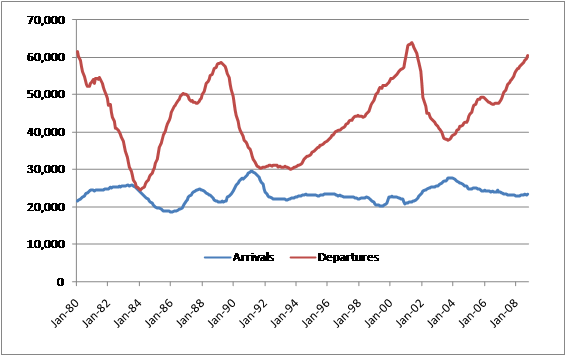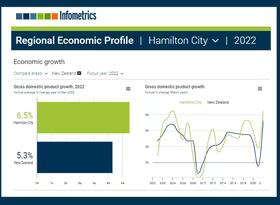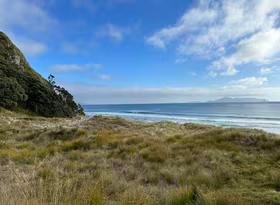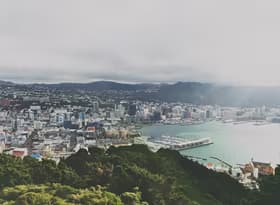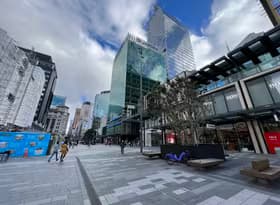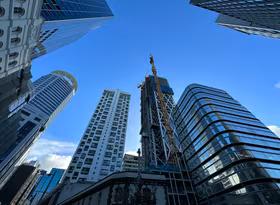Our unemployment release valve blows
The prospects for keeping down the growth of our unemployment queues have taken a turn for the worse. Late last year we were hoping that unemployment would only reach 6% at the depth of the current recession. A key factor in keeping the unemployment rate from blowing out was the assumption that Australia’s economy would keep chugging along and absorb much of our surplus labour. But with Australia’s prospects suddenly looking a lotless rosy we can no longer look to our biggest neighbour to alleviate our problem.
Predicting New Zealand’s population, labour force and unemployment rate is difficult due to, among other factors, the volatility of population flows into and out of New Zealand. Contributing to the volatility is that nearly a million people eligible to live in New Zealand currently reside beyond the borders of our country and tough global conditions can send these expatriates back home. If you are unemployed you may as well be unemployed at home where at least you can count on some family support.
After Australia, the highest concentrations of Kiwi expatriates are in the United Kingdom and the United States where the economies are expected to contract by up to five percent over the length of the current recession. Mass layoffs in these countries are likely to entice some Kiwi expatriates back home and discourage others from going. The return of only 20,000 of the one million expatriates to New Zealand in a year would add about half a percentage point to our population and labour force growth rate.
Until recently we could have looked to Australia as being our labour market pressure release valve. Domestic layoffs and the return of expatriates would be offset by departures to Australia where the economy was expected to continue growing albeit much more slowly than recent years. But prospects in Australia are changing rapidly. Respected forecasting agency Access Economics believes the Aussie economy shrank in the December quarter, despite the Government’s $10.4 billion economic stimulus package, and predict sit will shrink again in the current quarter. Access predicts that it will be the sharpest deceleration Australia’s economy has ever seen.
Australia’s slowdown comes off the back of a slowing Chinese economy whose voracious demand for commodities has fuelled Australia’s booming economy. But China’s boom is quickly ending. Annual economic growth in China almost halved from 13 per cent in 2007 to 6.8 per cent in 2008. Citigroup have estimated that China’s economy shrank 0.1 per cent in the December quarter from the September quarter – its first contraction in at least 16 years.
Sharply reduced employment intentions in Australia are reflected in the ANZ Bank job advertisement series. The number of job advertisements in Australian newspapers and internet job boards have been falling for eight consecutive months and dropped by nearly 10% in December 2008 alone (seasonally adjusted) and by nearly 30% compared with December 2007. Although official measures of employment held up in December there was a substantial shift from full time to part time work as employers cut hours as a precursor to laying off. Forecasters are now predicting the Australian unemployment rate to rise from 4.5% to between seven and eight percent. The growing queues of unemployed will discourage Kiwi workers from crossing the Tasman.
With a predicted rise in returning expatriates, reduced incentives to cross the ditch and domestic layoffs we are likely to see our unemployment rate rise somewhat higher than our earlier predictions. But despite the negatives associated with rising unemployment numbers there are a few positives that come from increased growth in our labour force and population. Returning expatriates will bring back savings which they will draw down through the tougher times. The growing population will need to be housed and will drive up the demand for accommodation. Housing consents are currently at a level which will not be sufficient to cope with even a modest growth in population. In the final quarter of last year consents were running at an annualised rate of below 14,000 per annum while we need about 10,000 more than this to house our growing population. The boost to population growth from returning expatriates will even further tighten the market for accommodation. This could offer some resistance to the slide in property values which will in turn prop up our personal wealth and consumer confidence and make us all feel a bit more comfortable about spending.
Looking beyond the recession the expected rise in arrivals and reduction in departures gives us an opportunity to shore up our workforce in anticipation of better times. We are entering a period of dramatic demographic change as the baby boomers move into retirement en masse. When the recession is over, we will need a growing workforce more than ever to support our burgeoning retired population.
John Key has expressed the need to halt the haemorrhaging of people across the Tasman. He may get his wish sooner than he thought. But his challenge is to create a New Zealand that will be attractive enough for those that have returned or newly settled to stay when finally the global economy recovers.
Figure 1. Arrivals and departures of New Zealand citizens
